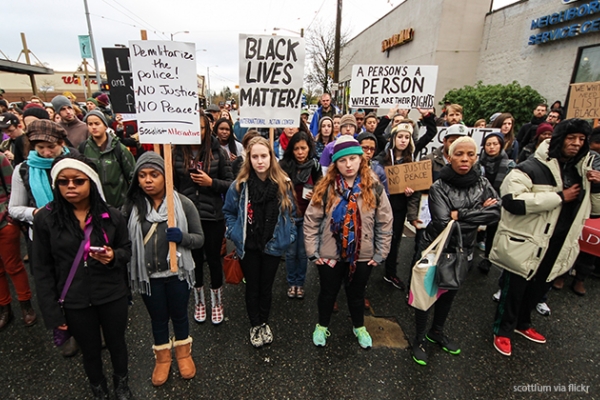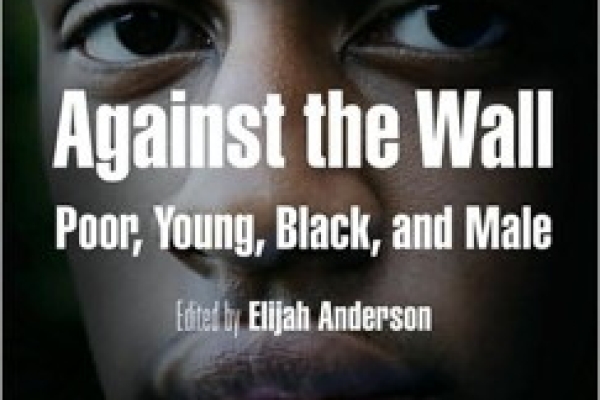Since the end of the Civil Rights Movement, large numbers of black people have made their way into settings previously occupied only by whites, though their reception has been mixed. Overwhelmingly white neighborhoods, schools, universities, workplaces, restaurants, and other public spaces remain. Blacks perceive these settings as “white space,” a perceptual category which they often consider to be informally “off limits” for people like them. In these settings, they expect to encounter occasional moments of acute disrespect, during which they are reminded that they “don’t belong.”
A spate of highly publicized recent incidents has highlighted the frequent racial targeting that blacks face as they live, work, study and otherwise navigate “white spaces.” In recent weeks, through the lens of various video cameras, we have seen: the police arrest two black men for sitting in a Starbucks in Philadelphia, a white student call the police on a black student for taking a nap in a common area at Yale, and three black filmmakers surrounded by police as they checked out of an Airbnb rental in a white neighborhood in California.
Despite the growth of an enormous black middle class, many whites assume that the only natural black space is that destitute and fearsome locality so commonly featured in the public media, including popular books, music and videos, and the TV news—the iconic ghetto. White people typically avoid black space, but black people are required to navigate the white space as a condition of their existence.
Fifty years ago, massive riots occurred in cities across the country, as blacks grew increasingly insistent, militant, and intolerant of their slow progress toward equality. It was in this context that the federal government passed far-reaching legislation that made black people full citizens and opened previously racially segregated workplaces, neighborhoods, schools, and universities. These reforms, coupled with a prolonged period of economic expansion, set the stage for the historic period of racial integration and incorporation, including the subsequent growth of the black middle class, which is now the largest in American history.
White society’s reception of upwardly and outwardly mobile black people, however, was decidedly mixed. To be sure, many whites encouraged and supported racial equality and progress, but others, consumed by deeply held prejudices, powerfully resisted these changes, which they feared abrogated their own rights and assumed privileges.
The Civil Rights Movement is long past, yet segregation persists. The wider society is still replete with overwhelmingly white public spaces, a situation that reinforces a normative sensibility in these settings in which black people are typically absent, not expected, and marginalized when present.
Black people typically approach the white space with care. When present there, blacks reflexively note the proportion of whites to blacks, or may look around for other blacks with whom to commune if not bond, and then may adjust their comfort level accordingly; when judging a setting as too white, they can feel uneasy, expecting to be reprimanded at any moment. For whites, however, the same settings are generally regarded as unremarkable, or as normal taken-for-granted reflections of civil society.
The city’s public spaces, workplaces, and neighborhoods may now be conceptualized essentially as a mosaic of white spaces, black spaces, and cosmopolitan spaces (racially diverse islands of surface civility) that may be in various stages of flux, from white to black or from black to white. As demographics change, the image of these public spaces is subject to change as well, impacting not only how a space is then occupied and by whom but also the way in which it is perceived.
What whites see as “diverse,” blacks may perceive as homogeneously white and relatively privileged. While the respective white and black spaces may appear to be racially homogeneous, typically they can be sub-classified in terms of ethnicity and social class. “White spaces,” for instance, often include not only traditional Americans of European descent, but also recently arrived European immigrants and visitors as well as others who may be perceived as phenotypically “white.” Similarly, those inhabiting “black space” are not always simply traditional African Americans but may be sub-classified as African, Latino, Haitian, Caribbean, Cape Verdean, and so on.
What I have referred to as “the cosmopolitan canopy” refers to a diverse island of civility, located in a sea of segregated living, where diverse people come together and, with the aid of “social gloss” – being polite and on occasion politically correct – typically get along. The “canopy” is a metaphor for civil society. Under the canopy, there exist essentially two orientations: the cosmopolitan (“cosmos”) and the ethnocentric (“ethnos”), and either type may be observed among all races, ethnicities, genders, and sexual preferences. Generally, cosmopolitans appear to be accepting of a diversity of people, and at times, seek them for friendship. On the other hand, ethnocentric people tend to be more tribal, or ethnically or racially particularistic, and prefer to be among others only like themselves.
Of course, every individual is ethnocentric or cosmopolitan to some degree, and these orientations may manifest more or less at any time. The more parochial the person, the more likely he or she is to exhibit ethnocentric or, at times, even bigoted behavior. Cosmos are typically relatively comfortable under the canopy, but those who are more or less ethnocentric are often required to “stretch” themselves in the face of strangers who are provocative to them; they sometimes summon a measure of social gloss to help them to tolerate or get along with the “diversity” of the canopy.
But there are circumstances in which this social gloss erodes, when deeply ethnocentric people have simply had enough, and then begin to make life uncomfortable for the more marginalized people under the canopy, including blacks, gays, women, and others, underscoring their sense of marginality, or even social exclusion.
Here, the ethnocentric person may draw lines of exclusion, expressing behavior that is insulting or disrespectful or racist towards the marginalized person, reminding or informing that person that he or she simply “does not belong” in this space. Such moments, which black people call “n****r moments,” often shock or even rend the canopy of civility and, when large enough, may even threaten its collapse, as happened in the recent incidents at Starbucks in Philadelphia, in the graduate dorm at Yale, and on a neighborhood street in California. As social media amplifies these moments, there is much for all of us to learn.
Elijah Anderson is a Penn IUR Scholar and the William K. Lanman, Jr. Professor of Sociology at Yale University. This article is adapted from Anderson’s forthcoming book Being Black in White Space.



